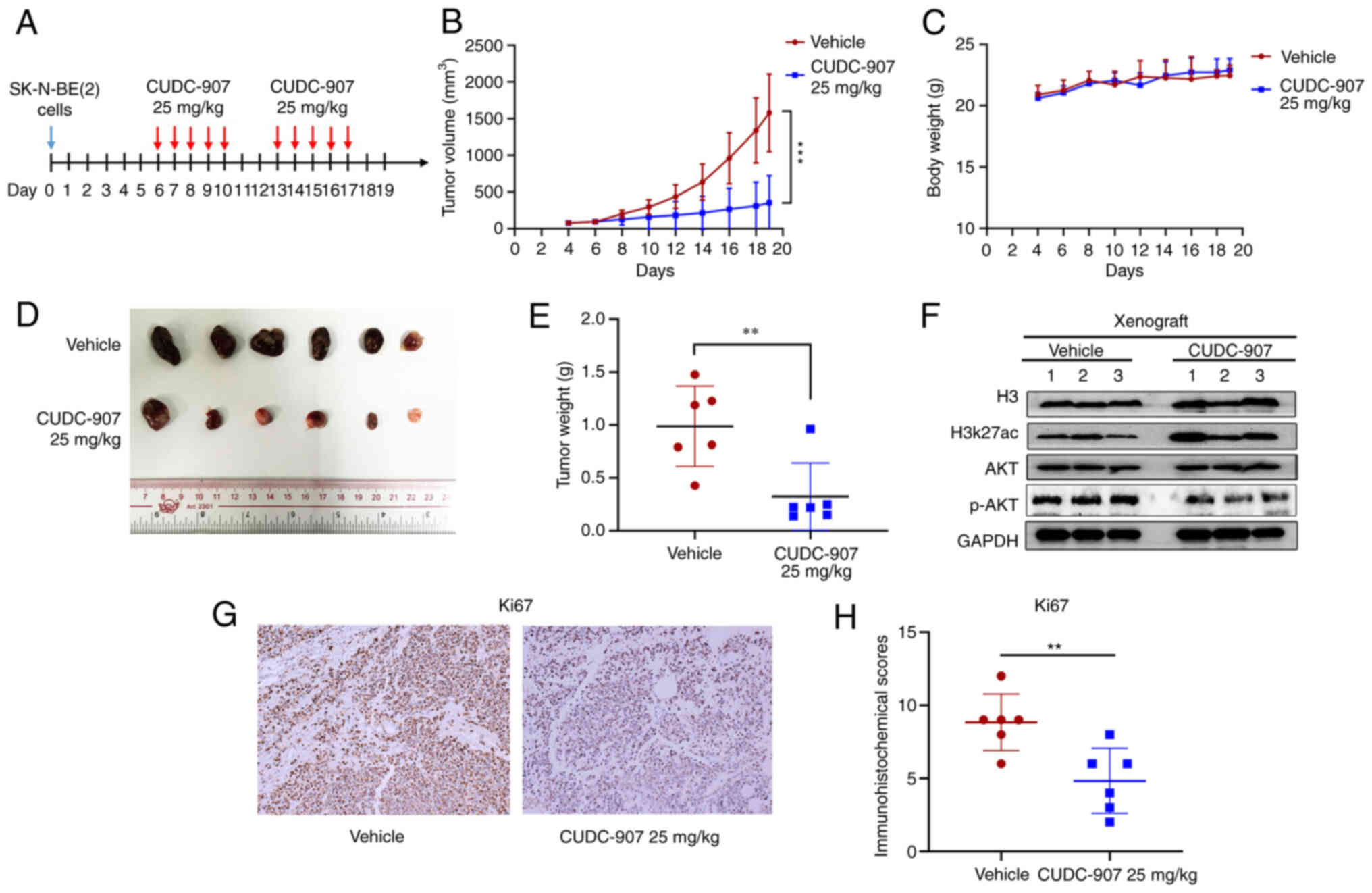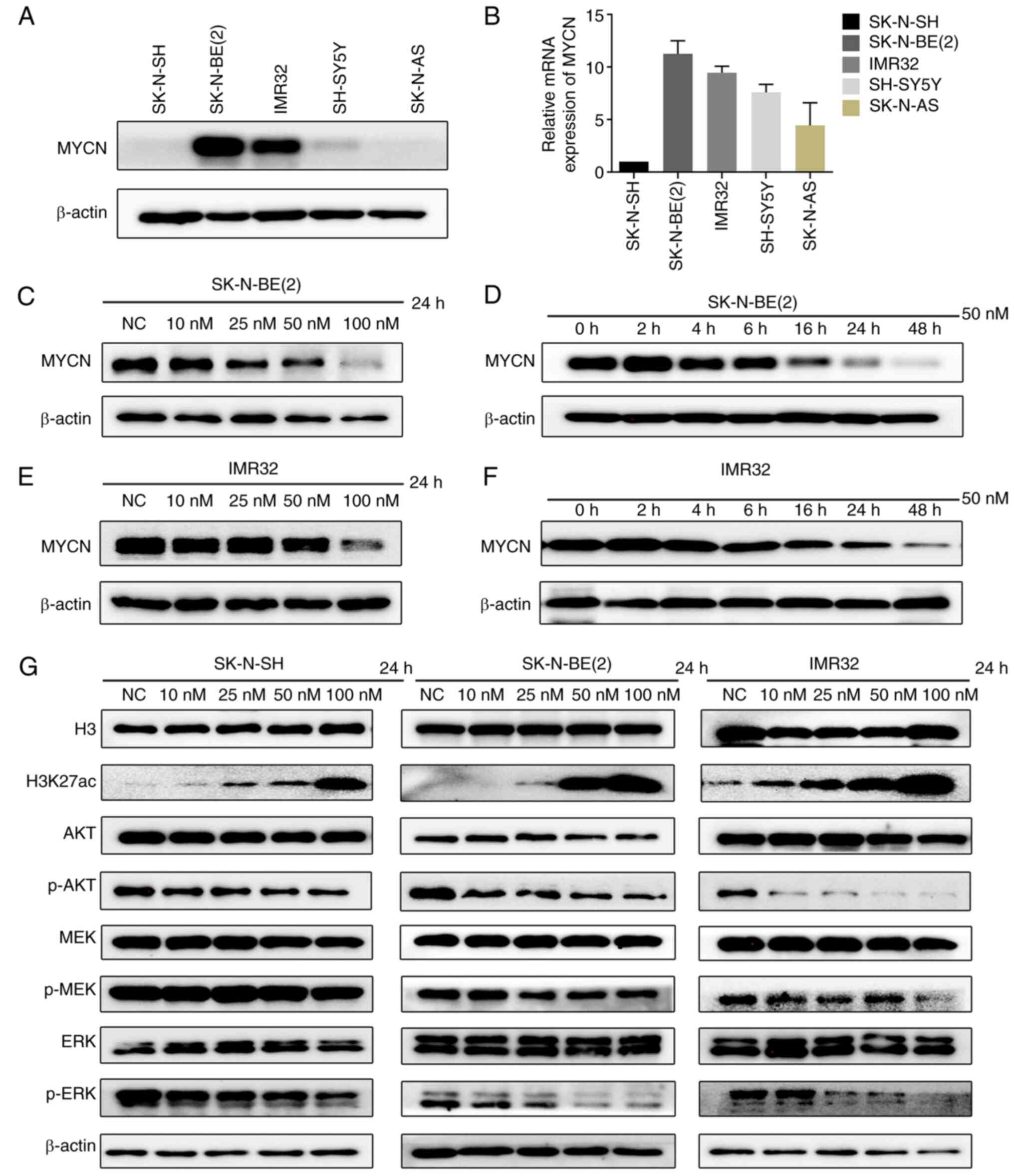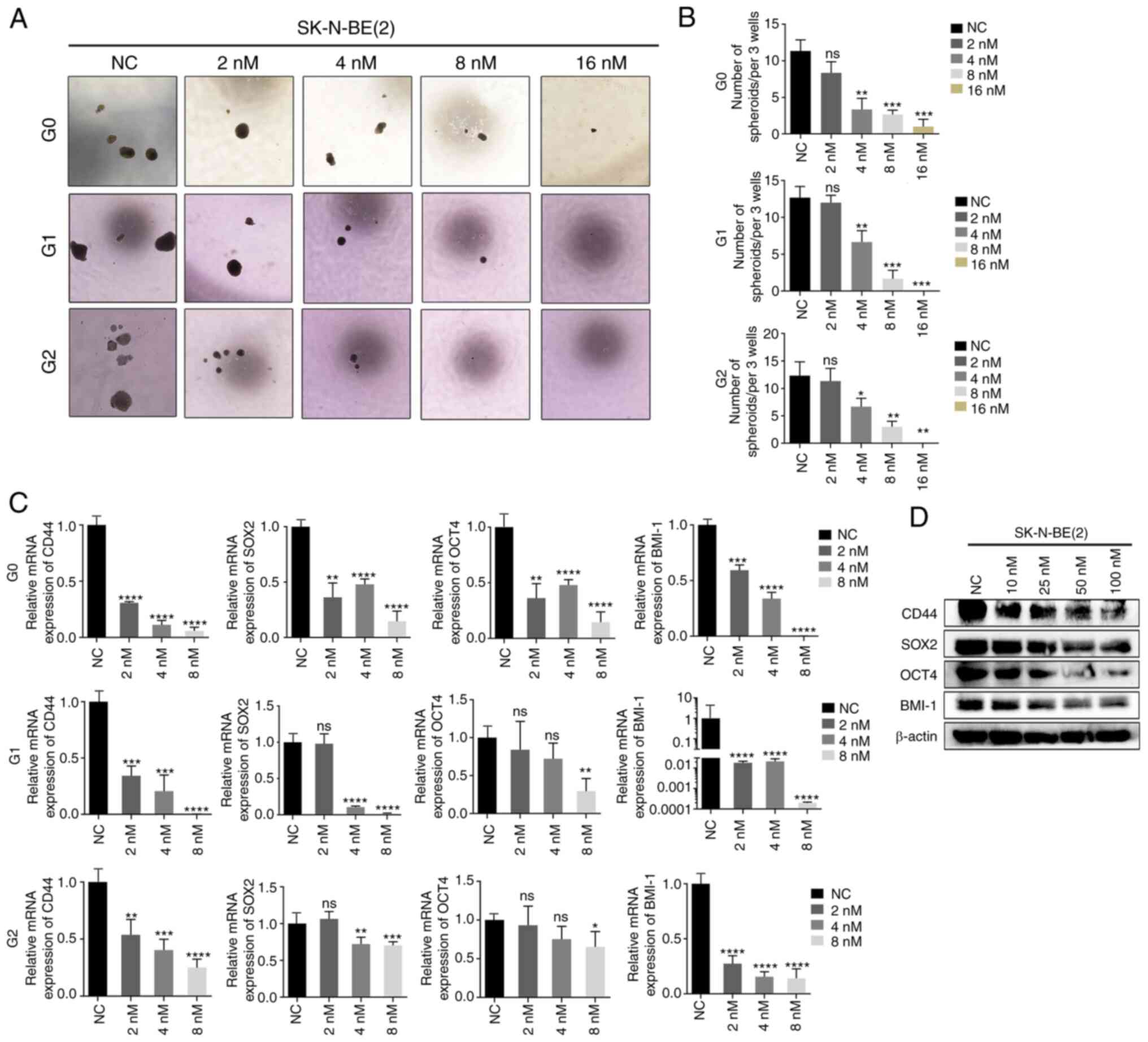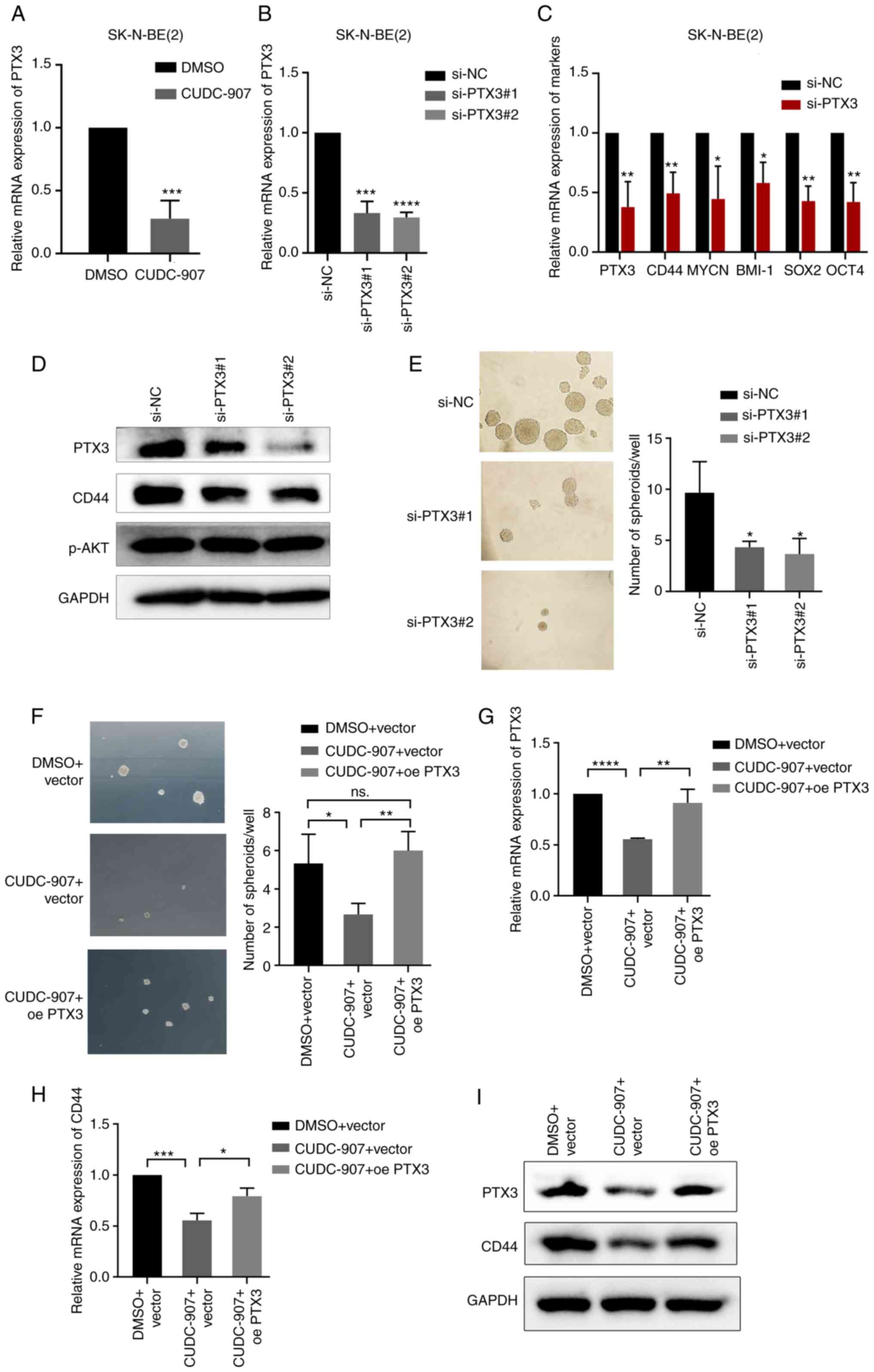|
1
|
Maris JM, Hogarty MD, Bagatell R and Cohn
SL: Neuroblastoma. Lancet. 369:2106–2120. 2007.
|
|
2
|
Whittle SB, Smith V, Doherty E, Zhao S,
McCarty S and Zage PE: Overview and recent advances in the
treatment of neuroblastoma. Expert Rev Anticancer Ther. 17:369–386.
2017.
|
|
3
|
Yu AL, Gilman AL, Ozkaynak MF, London WB,
Kreissman SG, Chen HX, Smith M, Anderson B, Villablanca JG, Matthay
KK, et al: Anti-GD2 antibody with GM-CSF, interleukin-2, and
isotretinoin for neuroblastoma. N Engl J Med. 363:1324–1334.
2010.
|
|
4
|
McGinty L and Kolesar J: Dinutuximab for
maintenance therapy in pediatric neuroblastoma. Am J Health Syst
Pharm. 74:563–567. 2017.
|
|
5
|
Schramm A, Köster J, Assenov Y, Althoff K,
Peifer M, Mahlow E, Odersky A, Beisser D, Ernst C, Henssen AG, et
al: Mutational dynamics between primary and relapse neuroblastomas.
Nat Genet. 47:872–877. 2015.
|
|
6
|
Mohammad HP, Barbash O and Creasy CL:
Targeting epigenetic modifications in cancer therapy: Erasing the
roadmap to cancer. Nat Med. 25:403–418. 2019.
|
|
7
|
Witt O, Deubzer HE, Lodrini M, Milde T and
Oehme I: Targeting histone deacetylases in neuroblastoma. Curr
Pharm Des. 15:436–447. 2009.
|
|
8
|
Robey RW, Chakraborty AR, Basseville A,
Luchenko V, Bahr J, Zhan Z and Bates SE: Histone deacetylase
inhibitors: Emerging mechanisms of resistance. Mol Pharm.
8:2021–2031. 2011.
|
|
9
|
Yin L, Liu Y, Peng Y, Peng Y, Yu X, Gao Y,
Yuan B, Zhu Q, Cao T, He L, et al: PARP inhibitor veliparib and
HDAC inhibitor SAHA synergistically co-target the UHRF1/BRCA1 DNA
damage repair complex in prostate cancer cells. J Exp Clin Cancer
Res. 37:1532018.
|
|
10
|
McClure JJ, Li X and Chou CJ: Advances and
challenges of HDAC inhibitors in cancer therapeutics. Adv Cancer
Res. 138:183–211. 2018.
|
|
11
|
Qian C, Lai CJ, Bao R, Wang DG, Wang J, Xu
GX, Atoyan R, Qu H, Yin L, Samson M, et al: Cancer network
disruption by a single molecule inhibitor targeting both histone
deacetylase activity and phosphatidylinositol 3-kinase signaling.
Clin Cancer Res. 18:4104–4113. 2012.
|
|
12
|
Guo H, Zeng D, Zhang H, Bell T, Yao J, Liu
Y, Huang S, Li CJ, Lorence E, Zhou S, et al: Dual inhibition of
PI3K signaling and histone deacetylation halts proliferation and
induces lethality in mantle cell lymphoma. Oncogene. 38:1802–1814.
2019.
|
|
13
|
Li X, Su Y, Madlambayan G, Edwards H,
Polin L, Kushner J, Dzinic SH, White K, Ma J, Knight T, et al:
Antileukemic activity and mechanism of action of the novel PI3K and
histone deacetylase dual inhibitor CUDC-907 in acute myeloid
leukemia. Haematologica. 104:2225–2240. 2019.
|
|
14
|
Chen Y, Peubez C, Smith V, Xiong S,
Kocsis-Fodor G, Kennedy B, Wagner S, Balotis C, Jayne S, Dyer MJ
and Macip S: CUDC-907 blocks multiple pro-survival signals and
abrogates microenvironment protection in CLL. J Cell Mol Med.
23:340–348. 2019.
|
|
15
|
Fu XH, Zhang X, Yang H, Xu XW, Hu ZL, Yan
J, Zheng XL, Wei RR, Zhang ZQ, Tang SR, et al: CUDC-907 displays
potent antitumor activity against human pancreatic adenocarcinoma
in vitro and in vivo through inhibition of HDAC6 to downregulate
c-Myc expression. Acta Pharmacol Sin. 40:677–688. 2019.
|
|
16
|
Pal S, Kozono D, Yang X, Fendler W, Fitts
W, Ni J, Alberta JA, Zhao J, Liu KX, Bian J, et al: Dual HDAC and
PI3K inhibition abrogates NF kappa B- and FOXM1-mediated DNA damage
response to radiosensitize pediatric high-grade gliomas. Cancer
Res. 78:4007–4021. 2018.
|
|
17
|
Younes A, Berdeja JG, Patel MR, Flinn I,
Gerecitano JF, Neelapu SS, Kelly KR, Copeland AR, Akins A, Clancy
MS, et al: Safety, tolerability, and preliminary activity of
CUDC-907, a first-in-class, oral, dual inhibitor of HDAC and PI3K,
in patients with relapsed or refractory lymphoma or multiple
myeloma: An open-label, dose-escalation, phase 1 trial. Lancet
Oncol. 17:622–631. 2016.
|
|
18
|
Oki Y, Kelly KR, Flinn I, Patel MR,
Gharavi R, Ma A, Parker J, Hafeez A, Tuck D and Younes A: CUDC-907
in relapsed/refractory diffuse large B-cell lymphoma, including
patients with MYC-alterations: Results from an expanded phase I
trial. Haematologica. 102:1923–1930. 2017.
|
|
19
|
Livak KJ and Schmittgen TD: Analysis of
relative gene expression data using real-time quantitative PCR and
the 2(-Delta Delta C(T)) method. Methods. 25:402–408. 2001.
|
|
20
|
Li M, Sun C, Bu X, Que Y, Zhang L, Zhang
Y, Zhang L, Lu S, Huang J, Zhu J, et al: ISL1 promoted
tumorigenesis and EMT via Aurora kinase A-induced activation of
PI3K/AKT signaling pathway in neuroblastoma. Cell Death Dis.
12:6202021.
|
|
21
|
Hickman DL: Minimal exposure times for
irreversible euthanasia with carbon dioxide in mice and rats. J Am
Assoc Lab Anim Sci. 61:283–286. 2022.
|
|
22
|
Matthay KK, Maris JM, Schleiermacher G,
Nakagawara A, Mackall CL, Diller L and Weiss WA: Neuroblastoma. Nat
Rev Dis Primers. 2:160782016.
|
|
23
|
Eleveld TF, Oldridge DA, Bernard V, Koster
J, Colmet DL, Diskin SJ, Schild L, Bentahar NB, Bellini A, Chicard
M, et al: Relapsed neuroblastomas show frequent RAS-MAPK pathway
mutations. Nat Genet. 47:864–871. 2015.
|
|
24
|
Mlakar V, Morel E, Mlakar SJ, Ansari M and
Gumy-Pause F: A review of the biological and clinical implications
of RAS-MAPK pathway alterations in neuroblastoma. J Exp Clin Cancer
Res. 40:1892021.
|
|
25
|
Veschi V, Verona F and Thiele CJ: Cancer
stem cells and neuroblastoma: Characteristics and therapeutic
targeting options. Front Endocrinol (Lausanne). 10:7822019.
|
|
26
|
Aravindan N, Somasundaram DB, Herman TS
and Aravindan S: Significance of hematopoietic surface antigen CD34
in neuroblastoma prognosis and the genetic landscape of
CD34-expressing neuroblastoma CSCs. Cell Biol Toxicol. 37:461–478.
2021.
|
|
27
|
Mehrazma M, Madjd Z, Kalantari E, Panahi
M, Hendi A and Shariftabrizi A: Expression of stem cell markers,
CD133 and CD44, in pediatric solid tumors: a study using tissue
microarray. Fetal Pediatr Pathol. 32:192–204. 2013.
|
|
28
|
Mesrati MH, Syafruddin SE, Mohtar MA and
Syahir A: CD44: A multifunctional mediator of cancer progression.
Biomolecules. 11:18502021.
|
|
29
|
Gomez KE, Wu F, Keysar SB, Morton JJ,
Miller B, Chimed TS, Le PN, Nieto C, Chowdhury FN, Tyagi A, et al:
Cancer cell CD44 mediates macrophage/monocyte-driven regulation of
head and neck cancer stem cells. Cancer Res. 80:4185–4198.
2020.
|
|
30
|
Hsiao YW, Chi JY, Li CF, Chen LY, Chen YT,
Liang HY, Lo YC, Hong JY, Chuu CP, Hung LY, et al: Disruption of
the pentraxin 3/CD44 interaction as an efficient therapy for
triple-negative breast cancers. Clin Transl Med. 12:e7242022.
|
|
31
|
Zafar A, Wang W, Liu G, Wang X, Xian W,
McKeon F, Foster J, Zhou J and Zhang R: Molecular targeting
therapies for neuroblastoma: Progress and challenges. Med Res Rev.
41:961–1021. 2021.
|
|
32
|
Westhoff MA, Karpel-Massler G, Brühl O,
Enzenmuller S, La Ferla-Bruhl K, Siegelin MD, Nonnenmacher L and
Debatin KM: A critical evaluation of PI3K inhibition in
glioblastoma and neuroblastoma therapy. Mol Cell Ther.
2:322014.
|
|
33
|
Li Z and Thiele CJ: Targeting Akt to
increase the sensitivity of neuroblastoma to chemotherapy: Lessons
learned from the brain-derived neurotrophic factor/TrkB signal
transduction pathway. Expert Opin Ther Targets. 11:1611–1621.
2007.
|
|
34
|
Boller D, Schramm A, Doepfner KT, Shalaby
T, von Bueren AO, Eggert A, Grotzer MA and Arcaro A: Targeting the
phosphoinositide 3-kinase isoform p110delta impairs growth and
survival in neuroblastoma cells. Clin Cancer Res. 14:1172–1181.
2008.
|
|
35
|
Iwamoto M, Friedman EJ, Sandhu P, Agrawal
NG, Rubin EH and Wagner JA: Clinical pharmacology profile of
vorinostat, a histone deacetylase inhibitor. Cancer Chemother
Pharmacol. 72:493–508. 2013.
|
|
36
|
Zorzi AP, Bernstein M, Samson Y, Wall DA,
Desai S, Nicksy D, Nancy W, Elizabeth E and Sylvain B: A phase I
study of histone deacetylase inhibitor, pracinostat (SB939), in
pediatric patients with refractory solid tumors: IND203 a trial of
the NCIC IND pro-gram/C17 pediatric phase I consortium. Pediatr
Blood Cancer. 60:1868–1874. 2013.
|
|
37
|
Yang J, Nie J, Ma X, Wei Y, Peng Y and Wei
X: Targeting PI3K in cancer: Mechanisms and advances in clinical
trials. Mol Cancer. 18:262019.
|
|
38
|
Chilamakuri R and Agarwal S: Dual
targeting of PI3K and HDAC by CUDC-907 inhibits pediatric
neuroblastoma growth. Cancers (Basel). 14:10672022.
|
|
39
|
Mondello P, Derenzini E, Asgari Z, Philip
J, Brea EJ, Seshan V, Hendrickson RC, de Stanchina E, Scheinberg DA
and Younes A: Dual inhibition of histone deacetylases and
phosphoinositide 3-kinase enhances therapeutic activity against B
cell lymphoma. Oncotarget. 8:14017–14028. 2017.
|
|
40
|
Vega FM, Colmenero-Repiso A, Gomez-Munoz
MA, Rodriguez-Prieto I, Aguilar-Morante D, Ramirez G, Marquez C,
Cabello R and Pardal R: CD44-high neural crest stem-like cells are
associated with tumour aggressiveness and poor survival in
neuroblastoma tumours. EBioMedicine. 49:82–95. 2019.
|
|
41
|
Fabian J, Lodrini M, Oehme I, Schier MC,
Thole TM, Hielscher T, Kopp-Schneider A, Opitz L, Capper D, von
Deimling A, et al: GRHL1 acts as tumor suppressor in neuroblastoma
and is negatively regulated by MYCN and HDAC3. Cancer Res.
74:2604–2616. 2014.
|
|
42
|
Fabian J, Opitz D, Althoff K, Lodrini M,
Hero B, Volland R, Beckers A, de Preter K, Decock A, Patil N, et
al: MYCN and HDAC5 transcriptionally repress CD9 to trigger
invasion and metastasis in neuroblastoma. Oncotarget.
7:66344–66359. 2016.
|
|
43
|
Chesler L, Schlieve C, Goldenberg DD,
Kenney A, Kim G, McMillan A, Matthay KK, Rowitch D and Weiss WA:
Inhibition of phosphatidylinositol 3-kinase destabilizes Mycn
protein and blocks malignant progression in neuroblastoma. Cancer
Res. 66:8139–8146. 2006.
|
|
44
|
Smith JR, Moreno L, Heaton SP, Chesler L,
Pearson AD and Garrett MD: Novel pharmacodynamic biomarkers for
MYCN protein and PI3K/AKT/mTOR pathwaysignaling in children with
neuroblastoma. Mol Oncol. 10:538–552. 2016.
|
|
45
|
Valencia-Sama I, Ladumor Y, Kee L,
Adderley T, Christopher G, Robinson CM, Kano Y, Ohh M and Irwin MS:
NRAS status determines sensitivity to SHP2 inhibitor combination
therapies targeting the RAS-MAPK pathway in neuroblastoma. Cancer
Res. 80:3413–3423. 2020.
|
|
46
|
Chakrabarti L, Abou-Antoun T, Vukmanovic S
and Sandler AD: Reversible adaptive plasticity: A mechanism for
neuroblastoma cell heterogeneity and chemo-resistance. Front Oncol.
2:822012.
|
|
47
|
Nassar D and Blanpain C: Cancer stem
cells: Basic concepts and therapeutic implications. Annu Rev
Pathol. 11:47–76. 2016.
|
|
48
|
Ross RA, Walton JD, Han D, Guo HF and
Cheung NK: A distinct gene expression signature characterizes human
neuroblastoma cancer stem cells. Stem Cell Res. 15:419–426.
2015.
|
|
49
|
Dong W, Xu X, Luo Y, Yang C, He Y, Dong X
and Wang J: PTX3 promotes osteogenic differentiation by triggering
HA/CD44/FAK/AKT positive feedback loop in an inflammatory
environment. Bone. 154:1162312022.
|
|
50
|
Zhang H, Brown RL, Wei Y, Zhao P, Liu S,
Liu X, Deng Y, Hu X, Zhang J, Gao XD, et al: CD44 splice isoform
switching determines breast cancer stem cell state. Genes Dev.
33:166–179. 2019.
|
|
51
|
Louhichi T, Ziadi S, Saad H, Dhiab MB,
Mestiri S and Trimeche M: Clinicopathological significance of
cancer stem cell markers CD44 and ALDH1 expression in breast
cancer. Breast Cancer. 25:698–705. 2018.
|
|
52
|
Elkashty OA, Elghanam GA, Su X, Liu Y,
Chauvin PJ and Tran SD: Cancer stem cells enrichment with surface
markers CD271 and CD44 in human head and neck squamous cell
carcinomas. Carcinogenesis. 41:458–466. 2020.
|
|
53
|
Chen F, Chen X, Ren Y, Weng G, Keng PC,
Chen Y and Lee SO: Radiation-induced glucocorticoid receptor
promotes CD44+ prostate cancer stem cell growth through activation
of SGK1-Wnt/beta-catenin signaling. J Mol Med (Berl). 97:1169–1182.
2019.
|
|
54
|
Tomizawa F, Jang MK, Mashima T and Seimiya
H: c-KIT regulates stability of cancer stemness in CD44-positive
colorectal cancer cells. Biochem Biophys Res Commun. 527:1014–1020.
2020.
|
|
55
|
Sadeghi A, Roudi R, Mirzaei A, Zare MA,
Madjd Z and Abolhasani M: CD44 epithelial isoform inversely
associates with invasive characteristics of colorectal cancer.
Biomark Med. 13:419–426. 2019.
|
|
56
|
Kumazoe M, Takai M, Bae J, Hiroi S, Huang
Y, Takamatsu K, Won Y, Yamashita M, Hidaka S, Yamashita S, et al:
FOXO3 is essential for CD44 expression in pancreatic cancer cells.
Oncogene. 36:2643–2654. 2017.
|
|
57
|
Cai HY, Yu B, Feng ZC, Qi X and Wei XJ:
Clinical significance of CD44 expression in children with
hepatoblastoma. Genet Mol Res. 14:13203–13207. 2015.
|
|
58
|
Ghanem MA, Van Steenbrugge GJ, Van Der
Kwast TH, Sudaryo MK, Noordzij MA and Nijman RJ: Expression and
prognostic value Of CD44 isoforms in nephroblastoma (Wilms tumor).
J Urol. 168:681–686. 2002.
|
|
59
|
Amirghofran Z, Asiaee E and Kamazani FM:
Soluble CD44 and CD44v6 and prognosis in children with B-cell acute
lymphoblastic leukemia. Asia Pac J Clin Oncol. 12:e375–e382.
2016.
|
|
60
|
Legras S, Gunthert U, Stauder R, Curt F,
Oliferenko S, Kluin-Nelemans HC, Marie JP, Proctor S, Jasmin C and
Smadja-Joffe F: A strong expression of CD44-6v correlates with
shorter survival of patients with acute myeloid leukemia. Blood.
91:3401–3413. 1998.
|















